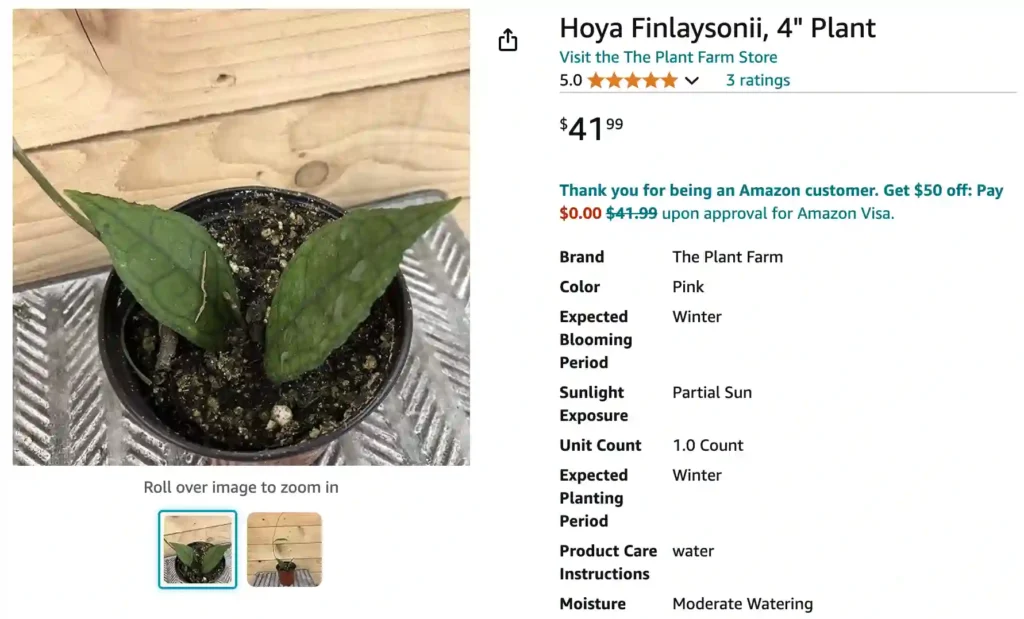
Hoya Finlaysonii: A Guide for Plant Enthusiasts
Hi, Ferb Vu here! Today, we’re diving into the world of the Hoya Finlaysonii, a captivating plant prized for its stunning foliage and unique blooms. Whether you’re a seasoned Hoya collector or a curious newbie, this guide will equip you with the knowledge to cultivate this tropical wonder.
What is a Hoya Finlaysonii?
The Hoya Finlaysonii is a captivating epiphytic vine, meaning it thrives by clinging to trees in its natural Southeast Asian habitat (Malaysia, Thailand, Borneo). This translates to specific care requirements we’ll explore later.
Key Characteristics:
- Leaves: Light green with prominent dark green veins, creating a beautiful contrast. The leaves are thick, stiff, and feel almost cardboard-like, reaching up to 15 cm in length.
- Flowers: Fragrant, creamy-yellow blooms with maroon tips, measuring around 10 mm. These appear in clusters (umbels) of up to 35 flowers, adding a touch of elegance to the plant.
Rarity: While not impossible to find, Hoya Finlaysonii is considered less common than some other Hoyas. This adds a touch of exclusivity for collectors.
Hoya Finlaysonii vs. Hoya Carnosa
The Hoya Carnosa, a popular Hoya variety, is often compared to the Finlaysonii. Here’s a quick breakdown of their key differences:
- Leaves:
- Finlaysonii: Light green with prominent dark veins, thick and stiff.
- Carnosa: Thinner, fleshy leaves with a wider range of colors (green, variegated).
- Flowers:
- Finlaysonii: Creamy-yellow with maroon tips, fragrant.
- Carnosa: Clusters of star-shaped flowers in various colors (pink, red).
Growth Habit:
- Finlaysonii: A vining plant that benefits from support structures like moss poles.
- Carnosa: Can be grown as a vining plant or a bush with proper pruning.
Overall: Both Hoyas are beautiful additions to your collection. Finlaysonii offers unique, textured foliage and fragrant blooms, while Carnosa provides a wider variety of leaf colors and growth options.
Hoya Finlaysonii vs Hoya Callistophylla
Distinguishing between Hoya Callistophylla and Hoya Finlaysonii involves observing their leaf veins. The veins of Hoya Callistophylla tend to be more pinnate, while those of Hoya Finlaysonii are undulate. Additionally, Hoya Finlaysonii’s veins are more pronounced and bold compared to Hoya Callistophylla’s. Notably, the veining in the margin area of Hoya Finlaysonii forms visible rectangular shapes, setting it apart from Hoya Callistophylla.
How to care for Hoya Finlaysonii?
Now that you’re smitten with the Finlaysonii, here’s how to ensure it thrives in your care:
- Light: Bright, indirect light is ideal. Avoid harsh midday sun, which can scorch the leaves.
- Water: Water thoroughly when the top inch of soil dries out. Overwatering is a major threat, so err on the side of underwatering.
- Soil: Well-draining, airy potting mix is crucial. Consider a succulent or orchid mix to ensure proper drainage.
- Humidity: While average household humidity can suffice, the Finlaysonii appreciates a boost in humidity, especially during dry periods. Grouping plants together or using a humidifier can help.
- Fertilizer: A balanced fertilizer diluted to half strength can be applied during the growing season (spring and summer) once a month.
- Temperature: Aim for temperatures between 65°F and 80°F (18°C – 27°C).
Additional Tips:
- Provide support for your vining Finlaysonii, such as a moss pole or trellis.
- Repot only when necessary, typically when the roots outgrow the current pot.
- Prune your Finlaysonii to encourage bushier growth or control its size.
How fast does Hoya Finlaysonii grow?
Growth rate can vary depending on light, temperature, and care. Generally, it’s a moderately fast-growing Hoya.
Is Hoya Finlaysonii toxic to pets?
Yes, like most Hoyas, the Finlaysonii is toxic to pets if ingested. Keep it out of reach of curious cats and dogs.
Why are my Hoya Finlaysonii leaves curling?
Underwatering or excessive sunlight can cause the leaves to curl. Ensure proper watering and adjust light exposure if needed.
How do I encourage my Hoya Finlaysonii to bloom?
Mature plants that receive adequate light and are root-bound are more likely to bloom. Providing a slight temperature drop at night can also stimulate flowering.
Conclusion
The Hoya Finlaysonii is a captivating plant with a unique charm. With proper care, you can cultivate this tropical gem and enjoy its stunning foliage and fragrant blooms for years to come. Happy planting!




